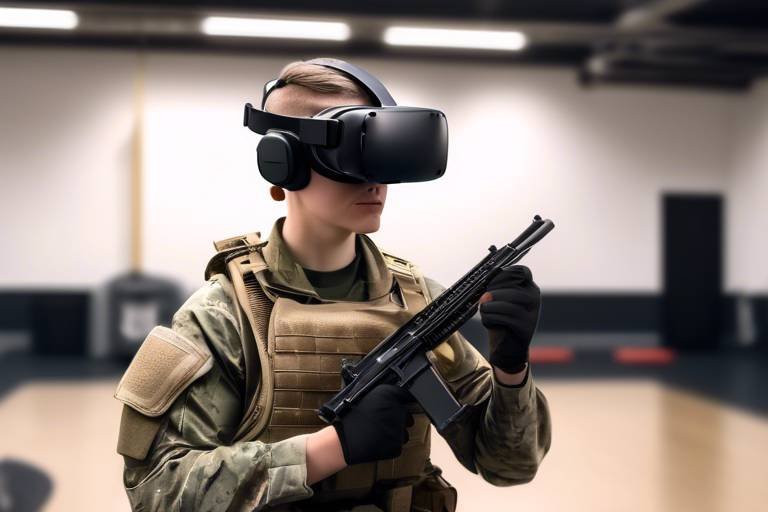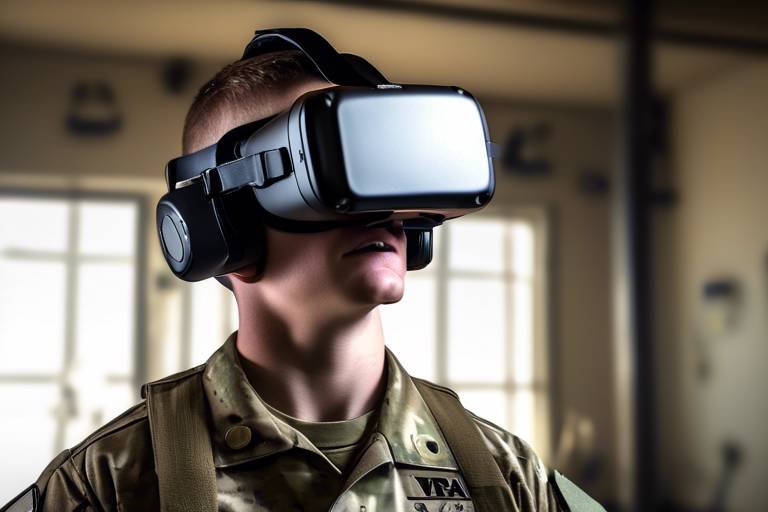Assessing the Applications of VR in Counterterrorism Strategies
In recent years, the landscape of counterterrorism has evolved dramatically, with technology playing a pivotal role in shaping strategies and operations. Among the most groundbreaking innovations is Virtual Reality (VR), a tool that is not just for gaming anymore. This article explores the innovative use of VR technology in enhancing counterterrorism strategies, highlighting its potential benefits, challenges, and future implications in security operations. Imagine a world where security personnel can train in lifelike scenarios, experiencing the intensity of real-world threats without the associated risks. That’s the promise of VR!
To appreciate the impact of VR on counterterrorism, we first need to understand what VR is all about. At its core, Virtual Reality is a computer-generated simulation that allows users to immerse themselves in a three-dimensional environment. This technology typically involves a few key components: a headset, motion controllers, and sometimes additional sensory equipment like haptic feedback devices. When combined, these elements create an immersive experience that can mimic real-world scenarios, making it an invaluable tool for training and operational purposes in counterterrorism.
One of the most significant applications of VR in counterterrorism is its ability to provide unique training platforms for security personnel. Traditional training methods often fall short in preparing individuals for the high-stress situations they may encounter during operations. VR changes the game by allowing personnel to engage in realistic simulations that closely resemble actual terrorist threats. This not only enhances their skills but also boosts their confidence. Imagine being able to practice a hostage rescue operation in a controlled yet realistic setting—this is exactly what VR offers!
A critical aspect of counterterrorism is the ability to make swift and effective decisions under pressure. VR can significantly enhance decision-making skills among security forces by immersing them in scenarios that require quick thinking and rapid response. For instance, personnel can be placed in a simulated environment where they must assess a situation, evaluate threats, and make tactical choices—all within a matter of seconds. This practice not only sharpens their instincts but also prepares them for the unpredictable nature of real-life terrorist situations.
The effectiveness of VR is amplified through scenario-based training. By exposing personnel to a variety of situations—ranging from bomb threats to active shooter scenarios—VR prepares them for the diverse and unpredictable challenges they may face in the field. Each scenario can be tailored to reflect current threats, ensuring that training remains relevant and impactful. This adaptability is crucial, as it allows security forces to stay one step ahead of potential dangers.
Beyond tactical training, VR can also be instrumental in teaching stress management techniques. In high-stakes environments, the ability to maintain composure is paramount. VR can simulate high-pressure situations where personnel must apply stress management strategies in real-time. This not only helps them learn how to control their emotions but also instills a sense of calmness that is essential for making sound decisions during actual operations.
Interestingly, VR isn’t just reserved for training security personnel; it can also be utilized to raise public awareness about terrorism and safety measures. By creating immersive experiences, communities can be educated on how to recognize and report suspicious activities. Imagine a virtual experience that walks citizens through the signs of potential threats, empowering them to play an active role in their safety. This engagement can foster a sense of community vigilance, which is crucial in counterterrorism efforts.
Despite its potential, implementing VR technology in counterterrorism is not without challenges. High costs, technological limitations, and the need for specialized training can create barriers to effective use. For instance, the initial investment in VR equipment and ongoing maintenance can be significant. Additionally, there is a pressing need for continuous updates to keep training scenarios relevant and effective.
The financial implications of adopting VR technology cannot be overlooked. Initial investments can be steep, and ongoing maintenance costs add up. Organizations must carefully consider how to allocate resources effectively for maximum impact. This might involve prioritizing certain training programs or seeking partnerships with tech companies to share costs and expertise.
Another challenge lies in the current technological limitations of VR. Issues such as hardware accessibility and software development can hinder widespread adoption. Not all agencies may have the budget to invest in cutting-edge VR systems, which can create disparities in training quality. Furthermore, continuous updates are necessary to keep training scenarios relevant and effective, adding another layer of complexity to implementation.
Looking ahead, the future of VR in counterterrorism is filled with potential. As technology continues to advance, we can expect developments that further enhance the effectiveness of VR applications in security strategies. Innovations such as improved haptic feedback, more realistic simulations, and AI integration could revolutionize how personnel are trained and prepared for real-world threats. The possibilities are exciting and could lead to a safer environment for everyone.
- What is Virtual Reality?
Virtual Reality (VR) is a computer-generated simulation that allows users to immerse themselves in a three-dimensional environment. - How does VR benefit counterterrorism training?
VR provides realistic simulations that enhance decision-making skills, stress management, and tactical training for security personnel. - What are the challenges of implementing VR in counterterrorism?
Challenges include high costs, technological limitations, and the need for continuous updates and specialized training. - What is the future of VR in counterterrorism?
The future holds potential advancements that could further improve VR applications in security strategies, making them more effective.

Understanding Virtual Reality Technology
Virtual Reality (VR) technology has revolutionized the way we interact with digital environments, creating immersive experiences that feel strikingly real. At its core, VR combines hardware and software to transport users into a simulated world where they can engage with their surroundings in a meaningful way. The technology typically involves head-mounted displays (HMDs), motion tracking sensors, and sometimes even haptic feedback devices that allow users to feel sensations in response to their actions. Imagine slipping on a pair of goggles and suddenly finding yourself in a bustling city or a war-torn battlefield, where every detail—from the sounds of the environment to the wind on your face—contributes to a lifelike experience.
The components of VR can be broken down into several key elements:
- Visual Display: The HMD is the most recognizable part of VR, providing stereoscopic visuals that create depth perception.
- Audio: Spatial audio systems enhance immersion, allowing users to hear sounds coming from specific directions, making the experience more realistic.
- Input Devices: Controllers and motion sensors track user movements, enabling interaction with the virtual environment.
- Software: This includes the applications and games that create the immersive experiences, often designed specifically for training or educational purposes in counterterrorism.
The beauty of VR lies in its ability to simulate real-world scenarios without the associated risks. This characteristic makes VR an invaluable tool in various fields, especially in counterterrorism. By creating environments that closely mimic potential terrorist threats, security personnel can practice their responses in a controlled setting. For instance, a simulated hostage situation can allow officers to rehearse negotiation tactics or tactical maneuvers without any real-world consequences. This method of training not only enhances skill sets but also builds confidence, preparing personnel for the unexpected challenges they may face in actual operations.
Moreover, VR technology can be tailored to address specific needs within counterterrorism strategies. For example, training modules can be designed to focus on urban warfare, bomb threat management, or crisis negotiation, providing a comprehensive training experience. The adaptability of VR scenarios means that as new threats emerge, training can evolve to meet those challenges head-on.
In conclusion, understanding VR technology is crucial for leveraging its full potential in counterterrorism. As we continue to develop and refine this technology, we can expect to see even more innovative applications that enhance training, improve decision-making, and ultimately contribute to safer communities. With the right implementation, VR can transform the landscape of security operations, making it a game-changer in the fight against terrorism.

Training and Simulation for Security Personnel
In the realm of counterterrorism, the stakes are incredibly high. Security personnel are often thrust into situations where split-second decisions can mean the difference between life and death. This is where Virtual Reality (VR) steps in, transforming traditional training methods into something that is not only more engaging but also significantly more effective. By immersing security forces in realistic simulations, VR provides a unique platform that prepares them for the high-stress environments they are likely to encounter.
Imagine slipping on a VR headset and finding yourself in a bustling airport, suddenly faced with a potential terrorist threat. You can almost feel the adrenaline pumping as you navigate through the chaos, making critical decisions on the fly. This immersive experience is not just a game; it’s a training tool that enhances real-life skills in a controlled environment. It’s this kind of training that can help personnel hone their instincts and improve their response times.
One of the most significant advantages of VR training is its ability to enhance decision-making skills. In the heat of the moment, it’s easy to freeze or make poor choices. However, by repeatedly practicing in a variety of simulated scenarios, security personnel can develop a sharper sense of judgment. For instance, they can learn to assess threats quickly and decide on the best course of action—whether that’s engaging a suspect, evacuating civilians, or calling for backup. The more they practice, the more instinctual their responses become.
Using VR to enhance decision-making skills among security forces is a game-changer. Immersive scenarios can help personnel practice critical thinking and rapid response in simulated terrorist threat situations. For example, a VR exercise could present a scenario where a suspicious package is discovered in a crowded area. The trainee must quickly evaluate the situation, consider the safety of the public, and determine the appropriate steps to take. This kind of training allows them to experience the pressure of real-time decision-making without the actual risk.
Scenario-based training is at the heart of VR's effectiveness. By exposing personnel to a wide range of scenarios—from hostage situations to bomb threats—VR prepares them for the unpredictable nature of real-life encounters. Each scenario can be tailored to reflect current threats, ensuring that training remains relevant. Moreover, the ability to replay scenarios allows for reflection and improvement, enabling security personnel to learn from their mistakes in a safe environment.
Another critical aspect of training involves stress management techniques. VR can simulate high-pressure situations that help personnel learn to maintain composure. For instance, during a VR drill, a trainee might face an unexpected explosion or a sudden influx of injured civilians. The immersive nature of VR allows them to experience stress in a controlled setting, where they can practice techniques to manage their anxiety and focus on their tasks. This training is invaluable, as it prepares them to act decisively and effectively when real crises arise.
In conclusion, the integration of VR into training programs for security personnel represents a significant leap forward in counterterrorism strategies. By providing realistic, immersive training experiences, VR not only enhances decision-making skills but also equips personnel with the tools they need to manage stress and respond effectively in high-stakes situations. The future of security training is here, and it’s more exciting—and more effective—than ever.
- What is the primary benefit of using VR in counterterrorism training?
The primary benefit is the ability to create realistic, immersive scenarios that prepare security personnel for high-stress situations they may encounter in the field.
- How does VR enhance decision-making skills?
VR allows personnel to practice critical thinking and rapid response in simulated terrorist threat situations, helping them to make better decisions under pressure.
- Can VR training help with stress management?
Yes, VR can simulate high-pressure situations, enabling personnel to practice stress management techniques in a safe environment.
- Are there any challenges to implementing VR in training?
Yes, challenges include high costs, technological limitations, and the need for specialized training to effectively use VR systems.

Enhancing Decision-Making Skills
In the high-stakes world of counterterrorism, the ability to make quick and effective decisions can mean the difference between life and death. Virtual Reality (VR) technology offers an innovative solution to enhance decision-making skills among security personnel by immersing them in realistic environments where they can practice their responses to various scenarios. Imagine being in a virtual simulation of a crowded public space, suddenly confronted with a threat. This is where the magic of VR comes into play, allowing officers to experience the pressure of real-life situations without the actual risk.
Through immersive training, personnel can engage in scenarios that require them to think critically and respond rapidly. For example, a VR simulation might present a situation where a suspicious package is discovered in a busy train station. The trainee must assess the situation, determine the appropriate course of action, and communicate effectively with their team—all under the stress of a ticking clock. This kind of practice can significantly improve their ability to make sound decisions in real-world crises.
Moreover, VR can provide a safe space for security personnel to experiment with different strategies and see the outcomes of their choices. By allowing them to fail in a controlled environment, they can learn invaluable lessons that would be too risky to explore in real life. For instance, if a trainee decides to evacuate a building instead of securing it, they can immediately see the consequences of that decision, which reinforces the importance of evaluating all options carefully before acting.
To further illustrate the impact of VR on decision-making skills, consider the following table that outlines key benefits of using VR in training:
| Benefit | Description |
|---|---|
| Realistic Scenarios | Simulates real-world situations that security personnel may face. |
| Immediate Feedback | Offers instant assessments of decisions made during training. |
| Safe Learning Environment | Allows personnel to learn from mistakes without real-world consequences. |
| Enhanced Team Communication | Encourages collaboration and communication among team members in simulated scenarios. |
In conclusion, enhancing decision-making skills through VR training not only prepares security personnel for the unpredictable nature of counterterrorism but also builds their confidence. As they navigate through various scenarios, they develop a sharper instinct for assessing threats and making quick, informed decisions. This is crucial in a field where every second counts, and the stakes are incredibly high. As VR technology continues to evolve, its integration into training programs may very well redefine how we prepare our security forces for the challenges of tomorrow.
- What is Virtual Reality (VR)? VR is a technology that creates immersive digital environments, allowing users to experience and interact with simulated scenarios.
- How can VR improve decision-making skills? By providing realistic training simulations, VR allows personnel to practice critical thinking and rapid responses in high-pressure situations.
- What are the benefits of scenario-based training in VR? Scenario-based training helps personnel prepare for diverse situations, enhances team communication, and allows for immediate feedback on decision-making.
- Are there any risks associated with VR training? While VR training is generally safe, it requires proper implementation and oversight to ensure that personnel are effectively learning and applying their training.
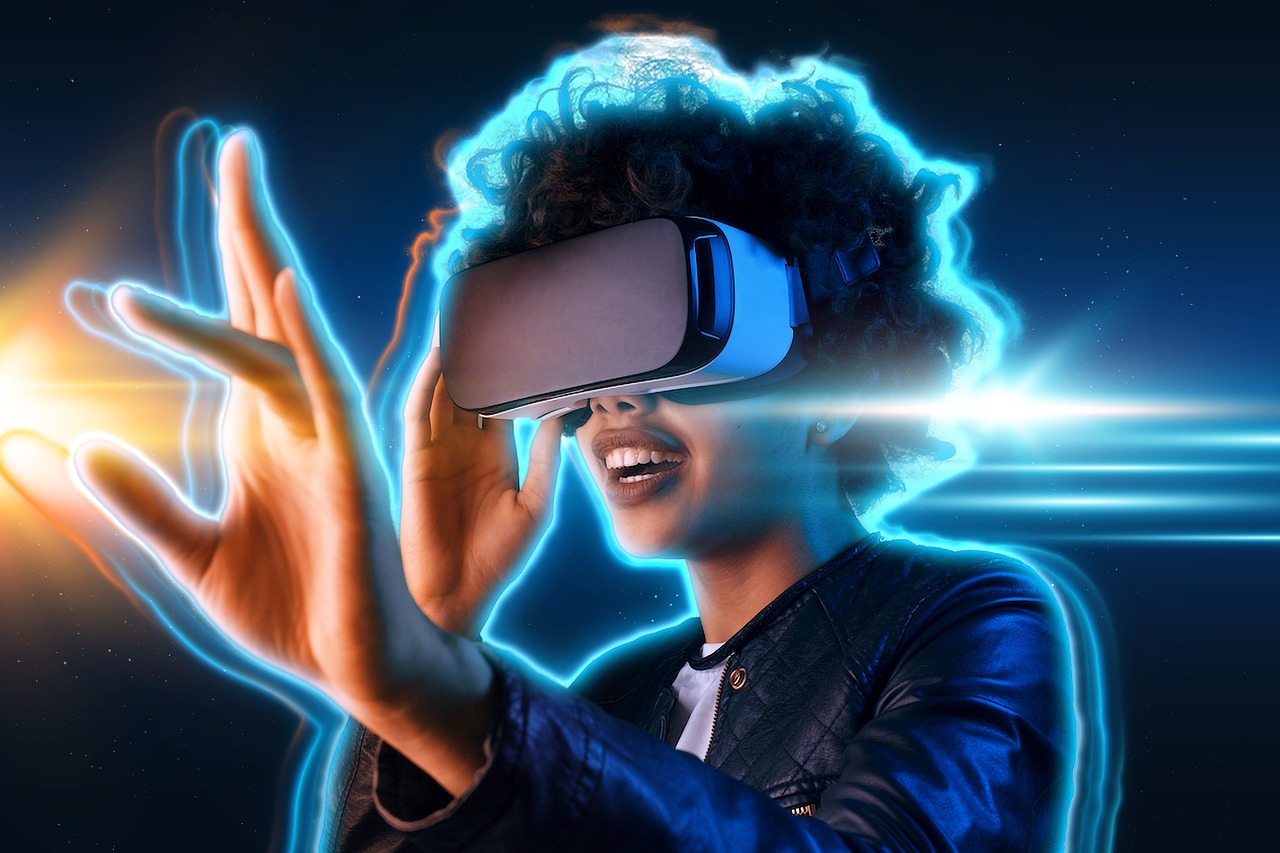
Scenario-Based Training
Scenario-based training using virtual reality (VR) is revolutionizing the way security personnel prepare for real-life counterterrorism operations. Imagine stepping into a lifelike simulation where every detail mimics a potential crisis situation. This immersive experience not only engages the senses but also allows trainees to practice their responses in a controlled environment. By replicating various scenarios, security forces can develop a deeper understanding of the complexities they might face on the job.
Through VR, trainees can encounter a range of situations, from hostage rescues to bomb threat responses, all without the risks associated with live training exercises. This method of training is akin to a pilot using a flight simulator; it provides a safe space to make mistakes and learn from them. The beauty of scenario-based training lies in its adaptability; scenarios can be tailored to reflect specific threats relevant to different regions or contexts.
Moreover, the immersive nature of VR enables trainees to experience the emotional and psychological pressures of high-stakes situations. For instance, they might have to navigate through a crowded area while assessing potential threats, all while under the pressure of a ticking clock. This high-stress environment helps to build resilience and prepares personnel to remain calm and collected when faced with real-life challenges.
Consider a scenario where a security team must respond to an active shooter situation. In a VR setting, they can practice communication and coordination with their team, learning to make split-second decisions that could save lives. The ability to rehearse these scenarios repeatedly ensures that when the moment arises, they are not only prepared but also confident in their skills.
Furthermore, scenario-based training can be enhanced with performance metrics. Instructors can track how trainees respond to various challenges, providing feedback that helps refine their skills. This data-driven approach allows for continuous improvement and ensures that training remains relevant and effective.
In summary, scenario-based training through VR offers a dynamic and impactful way to prepare security personnel for the unpredictable nature of counterterrorism work. By simulating real-world challenges, trainees gain invaluable experience, develop critical thinking skills, and learn to manage stress effectively—all essential components for success in the field.
- What is scenario-based training?
Scenario-based training is an educational approach that uses realistic situations to help trainees practice and develop their skills in a controlled environment.
- How does VR enhance scenario-based training?
Virtual reality immerses trainees in lifelike environments where they can experience and respond to various scenarios, improving their decision-making and stress management skills.
- What types of scenarios can be simulated in VR?
Scenarios can range from active shooter situations to bomb threats, hostage rescues, and other emergency responses tailored to specific security needs.
- Are there any risks associated with VR training?
While VR is a safe training method, it’s essential to ensure that personnel are properly trained to use the technology to avoid potential disorientation or motion sickness.

Stress Management Techniques
In the high-stakes world of counterterrorism, the ability to manage stress effectively can be the difference between success and failure. Stress management techniques delivered through Virtual Reality (VR) training provide security personnel with critical tools to maintain their composure during intense situations. Imagine stepping into a lifelike simulation where the sounds of chaos surround you, and the pressure is palpable. In such scenarios, the skills learned in a controlled VR environment can be invaluable.
One of the most effective stress management techniques involves breathing exercises. VR can guide personnel through various breathing techniques, teaching them how to slow their heart rate and regain focus in the midst of chaos. For instance, a simulation might present a high-pressure scenario where an officer must navigate a crowded area while remaining vigilant for threats. By practicing deep breathing and mindfulness within the VR environment, they can learn to center themselves, making clearer decisions when it matters most.
Another technique is visualization. In VR, personnel can visualize successful outcomes and rehearse their responses to potential threats. This mental rehearsal not only boosts confidence but also helps to reduce anxiety. When individuals can see themselves successfully managing a crisis in a simulated environment, they are more likely to replicate that success in real-life situations. The immersive nature of VR allows for a more profound impact than traditional training methods, as it engages multiple senses and creates a more realistic experience.
Moreover, VR can incorporate real-time feedback to enhance the learning experience. After completing a simulation, participants can receive immediate feedback on their performance, including how effectively they managed their stress. This feedback loop encourages continuous improvement and allows personnel to refine their techniques over time. For example, a participant might learn that they reacted too slowly in a critical moment, prompting them to focus on their decision-making speed in future simulations.
In addition to these techniques, VR training can also include group exercises, where teams work together in high-pressure scenarios. This collaboration not only fosters teamwork but also provides an opportunity for personnel to observe how their peers handle stress. By learning from one another, they can adopt various strategies that may work better for them individually. VR creates a safe space for experimentation and learning, where mistakes can be made without real-world consequences.
Overall, the integration of stress management techniques into VR training represents a significant advancement in preparing security personnel for the unpredictable nature of counterterrorism operations. As they learn to manage their stress effectively, they become more resilient and capable of handling the pressures that come with their critical roles.
- How does VR help with stress management in counterterrorism? VR immerses personnel in realistic scenarios, allowing them to practice stress management techniques like breathing exercises and visualization in a safe environment.
- What types of stress management techniques are used in VR training? Common techniques include breathing exercises, visualization, and real-time feedback on performance during simulations.
- Can VR training replace traditional training methods? While VR training offers unique advantages, it is most effective when used in conjunction with traditional training methods to provide a comprehensive learning experience.
- Is VR training expensive? The initial investment in VR technology can be significant, but the long-term benefits in terms of improved preparedness and reduced errors can outweigh the costs.
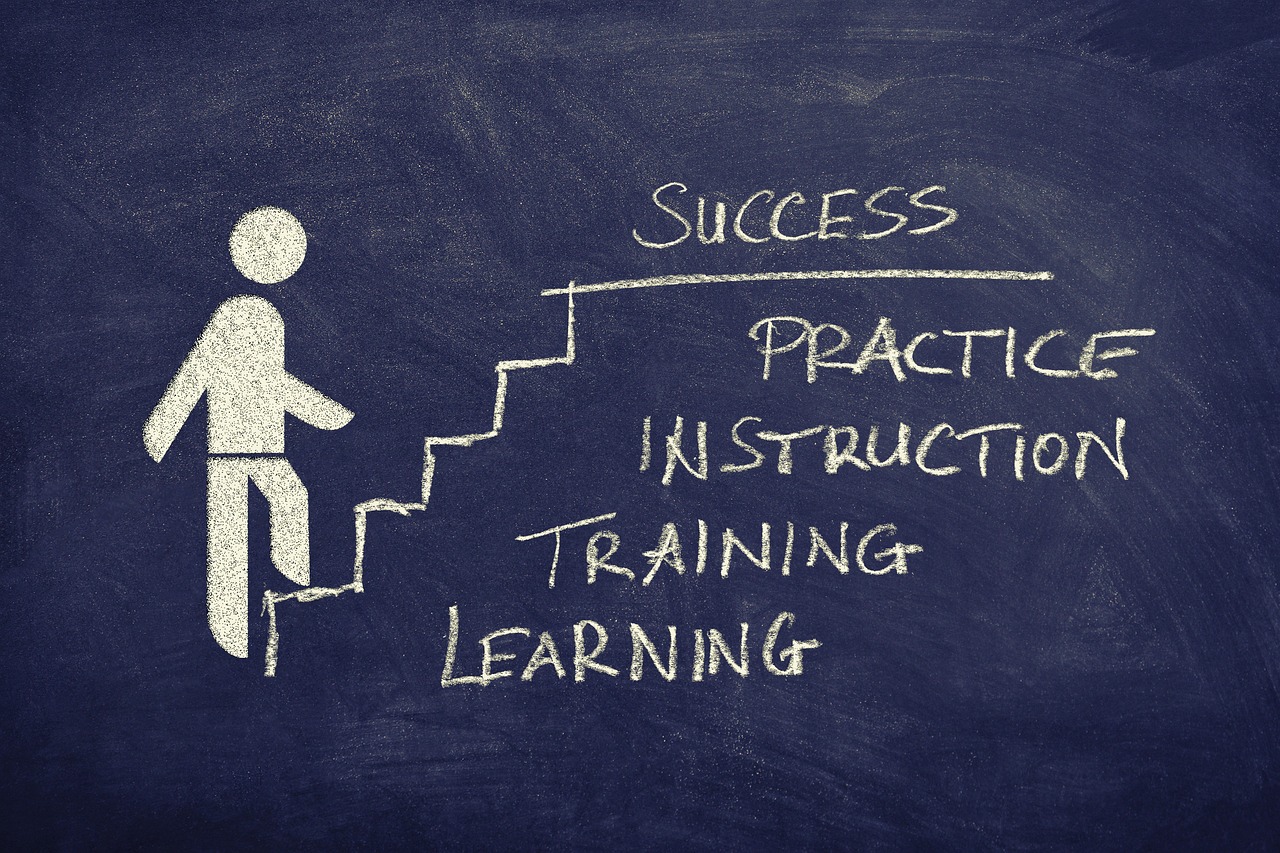
Public Awareness and Engagement
In today’s world, where the threat of terrorism looms large, it’s crucial to equip the public with the knowledge and tools to recognize and respond to suspicious activities. Virtual Reality (VR) emerges as a powerful ally in this endeavor, transforming the way we engage communities in understanding terrorism and enhancing their safety awareness. Imagine stepping into a simulated environment where you can experience a potential threat firsthand, without the real-world consequences. This immersive experience not only educates but also empowers individuals to act decisively in critical situations.
By utilizing VR, communities can participate in interactive scenarios that depict various terrorist threats. These scenarios can range from identifying suspicious behavior in a crowded area to understanding the protocols for reporting such activities. The beauty of VR lies in its ability to create realistic simulations that evoke genuine emotional responses, making the learning process more impactful. For instance, when participants encounter a simulated emergency situation, they are not just passive observers; they become active participants, honing their instincts and decision-making skills in a safe environment.
Moreover, VR can foster a greater sense of community involvement. Local law enforcement agencies can collaborate with VR developers to create tailored experiences that reflect the unique challenges faced by their communities. This collaboration can lead to the development of programs that are not only educational but also engaging. Imagine community workshops where families come together to experience VR scenarios, discussing what they learned and how they can contribute to local safety initiatives. This collective engagement can significantly enhance public vigilance and responsiveness.
Additionally, VR can be a compelling tool for schools and educational institutions. By introducing students to the realities of terrorism and safety protocols through immersive experiences, we can cultivate a generation that is more aware and proactive. Schools can organize VR sessions as part of their curriculum, allowing students to explore various scenarios in a controlled setting. This not only educates them about potential threats but also instills a sense of responsibility toward their community’s safety.
However, while the potential for VR in public awareness is immense, it’s essential to approach its implementation thoughtfully. The content must be sensitive and appropriate, ensuring that it educates without instilling fear. Striking the right balance is key to making VR a valuable tool in counterterrorism efforts. As we harness this technology, we must remember that the ultimate goal is to create a more informed and vigilant society, ready to stand together against the threats we face.
- How does VR help in public engagement regarding counterterrorism? VR creates immersive experiences that educate individuals about recognizing and responding to suspicious activities.
- Can VR be used in schools for safety education? Yes, schools can incorporate VR scenarios into their curriculum to teach students about terrorism awareness and safety protocols.
- What are the benefits of using VR for community workshops? VR workshops enhance community involvement, allowing participants to engage actively and discuss safety measures together.
- Are there any risks associated with using VR for public awareness? The content must be carefully crafted to avoid instilling fear while educating the public effectively.

Challenges of Implementing VR in Counterterrorism
While the potential of Virtual Reality (VR) in counterterrorism is immense, it's crucial to acknowledge the challenges that come with its implementation. First off, the financial implications cannot be overlooked. Investing in VR technology requires significant upfront costs, which include purchasing the necessary hardware and software, as well as ongoing maintenance and updates. For many organizations, especially those operating on tight budgets, these expenses can be a major hurdle. It's essential for decision-makers to consider not only the initial investment but also how to allocate resources effectively to maximize the impact of VR training programs.
Another challenge lies in the technological limitations currently faced by VR systems. While technology is advancing rapidly, there are still issues related to hardware accessibility. Not every security agency has the latest VR equipment at their disposal, which can create disparities in training quality. Additionally, the development of software tailored for specific counterterrorism scenarios is a complex task that requires skilled developers and ongoing support. This means that agencies must continuously update their programs to ensure they are relevant and effective, which can be a daunting task.
Moreover, the successful integration of VR into counterterrorism strategies necessitates specialized training for personnel. Simply providing access to VR technology is not enough; security forces need to be trained on how to use it effectively. This training can be time-consuming and may require additional resources, which can strain already limited budgets. Without adequate training, the potential benefits of VR can be significantly diminished, leaving personnel ill-prepared for real-world situations.
To summarize, the challenges of implementing VR in counterterrorism can be categorized into three main areas:
- Cost and Resource Allocation: High initial investments and ongoing maintenance costs can limit access.
- Technological Limitations: Issues with hardware accessibility and the need for continuous software updates can hinder effective use.
- Training Requirements: Personnel require specialized training to utilize VR technology effectively, which demands additional time and resources.
Despite these challenges, the potential of VR to revolutionize counterterrorism training and operations is undeniable. As technology continues to evolve and become more accessible, we may see a shift in how agencies approach these hurdles, paving the way for a more secure future.
Q1: What is the main benefit of using VR in counterterrorism?
A1: The main benefit of using VR in counterterrorism is its ability to create immersive training environments that simulate real-world scenarios, helping security personnel prepare for high-stress situations effectively.
Q2: Are there any specific challenges related to the cost of implementing VR?
A2: Yes, implementing VR can be expensive due to the high initial investment in hardware and software, as well as ongoing maintenance costs that may be difficult for some agencies to manage.
Q3: How can VR enhance decision-making skills among security personnel?
A3: VR enhances decision-making skills by allowing personnel to engage in realistic scenarios where they must think critically and respond rapidly, improving their ability to handle real-life terrorist threats.
Q4: What are the technological limitations of VR technology?
A4: Current technological limitations include issues with hardware accessibility, the complexity of developing tailored software, and the need for continuous updates to keep training relevant.
Q5: Is specialized training necessary for using VR in counterterrorism?
A5: Yes, specialized training is essential for personnel to effectively utilize VR technology, as improper use can diminish the training's effectiveness and leave personnel unprepared.
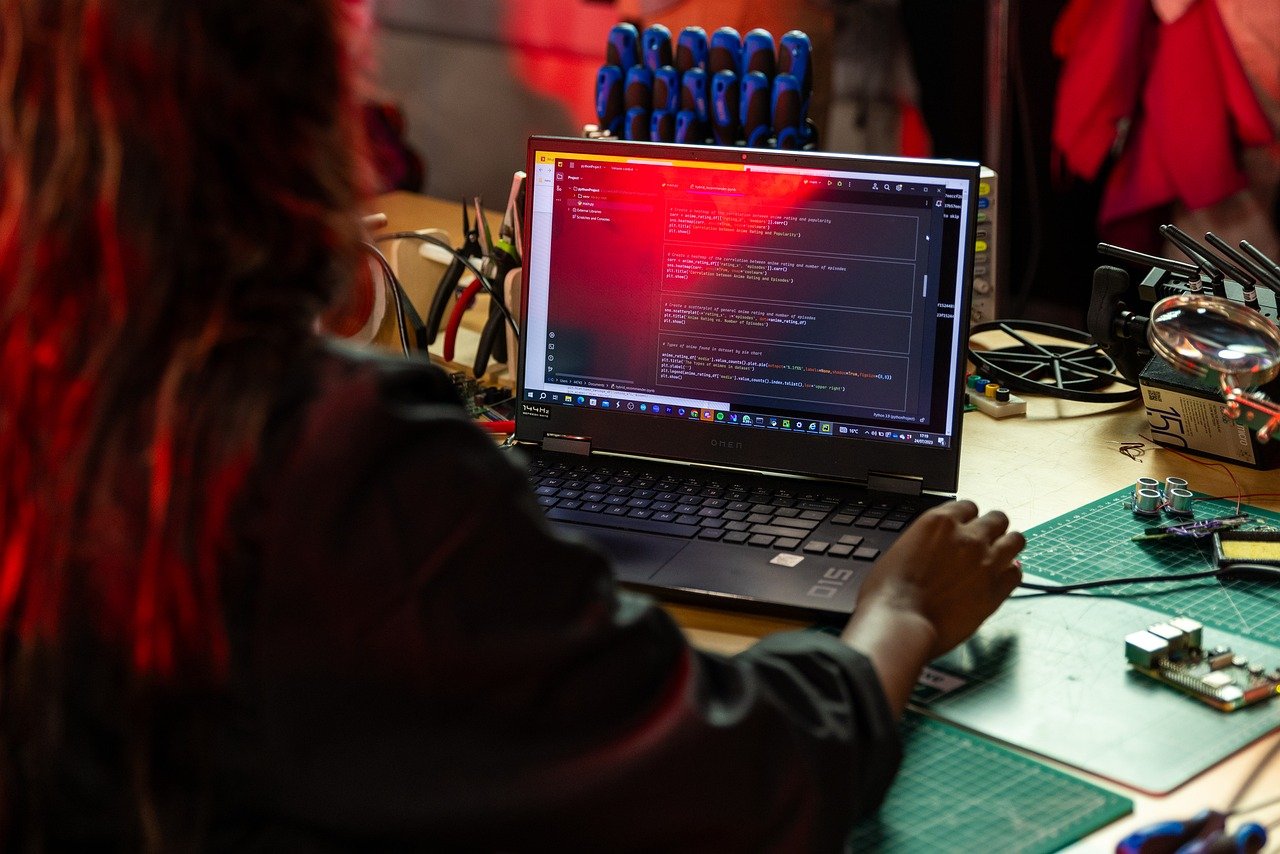
Cost and Resource Allocation
The implementation of Virtual Reality (VR) technology in counterterrorism strategies is not without its financial challenges. While the potential benefits are immense, the initial investment and ongoing costs can be daunting for many organizations. To truly harness the power of VR, security agencies must consider several factors in their budgeting and resource allocation processes.
Firstly, the initial costs associated with VR technology can be significant. This includes expenses for hardware, such as VR headsets and sophisticated computers capable of running complex simulations. On top of that, the software development costs can be substantial, especially if custom scenarios need to be created to meet the specific needs of a security agency. These costs can be a barrier for smaller organizations or those with limited budgets.
Moreover, it’s essential to think about the ongoing maintenance of the VR systems. Just like any other technology, VR systems require regular updates and maintenance to ensure they remain effective and relevant. This includes updating software to incorporate new threat scenarios or technological advancements, which can add to the overall costs.
Another crucial aspect is the allocation of resources for training personnel. Investing in VR technology is only part of the equation; organizations must also allocate funds for training staff to use these systems effectively. This often involves hiring specialized trainers or investing time in developing in-house expertise, which can further strain budgets.
To provide a clearer picture of the potential costs involved, consider the following table that outlines some of the typical expenses associated with implementing VR in counterterrorism:
| Cost Category | Estimated Cost |
|---|---|
| VR Hardware (headsets, computers) | $5,000 - $15,000 |
| Software Development | $10,000 - $50,000 |
| Maintenance and Updates | $1,000 - $5,000 annually |
| Training Personnel | $2,000 - $10,000 |
As organizations weigh these costs, they must also consider the potential return on investment. The enhanced training and operational effectiveness that VR can provide may ultimately save lives and resources in high-stakes situations. Thus, while the initial financial burden may seem overwhelming, the long-term benefits could justify the expenditure.
In conclusion, effective is critical for the successful implementation of VR technology in counterterrorism. By carefully planning and budgeting for both the initial and ongoing costs, security agencies can leverage this innovative technology to enhance their operational capabilities and ultimately improve public safety.
- What are the main costs associated with implementing VR technology? The main costs include hardware, software development, maintenance, and training personnel.
- How can organizations justify the investment in VR? Organizations can justify the investment by considering the enhanced training effectiveness and potential for saving lives in critical situations.
- Are there ongoing costs after initial implementation? Yes, there are ongoing costs for maintenance, software updates, and continuous training.

Technological Limitations
When it comes to implementing virtual reality (VR) technology in counterterrorism strategies, there are several that can pose significant challenges. While the potential of VR is immense, the reality of its application is often hindered by various factors. One of the primary hurdles is the cost of hardware and software. High-quality VR systems can be prohibitively expensive, especially for government agencies that may already be operating on tight budgets. This initial investment can deter organizations from adopting VR solutions, even when the long-term benefits are clear.
Moreover, the accessibility of VR technology is another critical issue. Not every agency has the resources or infrastructure to support advanced VR systems. This can create a divide between agencies that can afford cutting-edge technology and those that cannot, leading to inconsistencies in training and preparedness across different regions. Additionally, the development of specialized software tailored for counterterrorism scenarios is still in its infancy. While there are some existing programs, many lack the depth and realism required to fully prepare personnel for real-world situations.
Another significant limitation is the need for continuous updates. The landscape of terrorism is constantly evolving, and so must the training scenarios used in VR. This necessitates regular updates to both the hardware and software to ensure that training remains relevant and effective. Unfortunately, many agencies may struggle to keep up with these demands due to budget constraints or lack of technical expertise.
Furthermore, user training is an often-overlooked aspect of VR implementation. Simply having the technology is not enough; personnel need to be trained on how to use these systems effectively. This requires time and resources that many organizations may not have. Without proper training, the potential of VR can be severely underutilized, rendering it less effective than intended.
In summary, while VR holds great promise for enhancing counterterrorism strategies, its implementation is fraught with challenges. From high costs to technological limitations and the need for ongoing support and training, these factors must be addressed to unlock the full potential of VR in this critical field.
- What are the main benefits of using VR in counterterrorism?
VR can provide immersive training environments that simulate real-world scenarios, enhancing decision-making skills and stress management techniques among security personnel. - What are some challenges faced when implementing VR technology?
Challenges include high costs, accessibility issues, the need for specialized software, and the requirement for ongoing updates and training. - How can VR improve public awareness regarding terrorism?
By creating engaging and educational experiences, VR can help communities understand how to recognize and report suspicious activities effectively. - Is VR technology evolving in the field of counterterrorism?
Yes, advancements in VR technology are continuously being made, which could enhance its effectiveness in training and operational strategies.
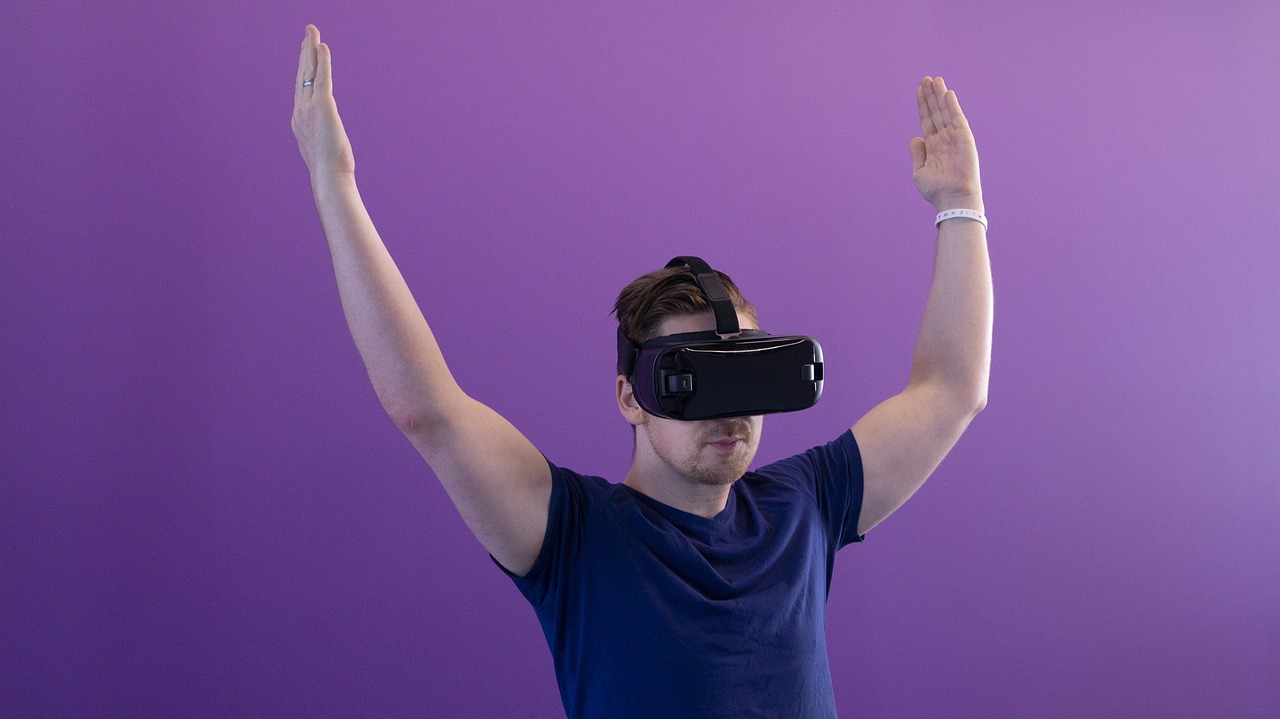
The Future of VR in Counterterrorism
As we look to the horizon of technological advancements, the future of Virtual Reality (VR) in counterterrorism appears not just promising, but potentially transformative. Imagine a world where security personnel can step into a fully immersive environment that replicates real-world threats, allowing them to train and prepare like never before. This isn't just a dream; it's on the verge of becoming a reality. With ongoing innovations in VR technology, the applications in counterterrorism are set to expand, offering new tools for training, strategic planning, and public engagement.
One of the most exciting prospects is the integration of artificial intelligence (AI) with VR systems. By harnessing AI, VR training simulations can adapt in real-time to the actions of the trainees, creating a more dynamic and unpredictable training environment. This means that security personnel can face a variety of scenarios that are tailored to their skill level, ultimately enhancing their decision-making capabilities under pressure. The more realistic the training, the better prepared they will be when facing actual threats.
Moreover, the potential for collaboration across agencies and nations is another thrilling aspect of VR's future in counterterrorism. Imagine a scenario where law enforcement and military personnel from different countries can engage in joint training exercises through a shared virtual platform. This could foster international cooperation and understanding, crucial elements in the fight against terrorism that often transcends borders. Such collaborative efforts could lead to the development of a global standard for counterterrorism training, enhancing the overall effectiveness of security operations worldwide.
However, the future isn't without its challenges. While the technology is advancing, there remains a significant need for investment in infrastructure and training. As VR becomes more integrated into counterterrorism strategies, agencies will need to allocate resources wisely to ensure that personnel are not only trained effectively but also that the technology remains up-to-date. The financial implications could be substantial, but the potential benefits far outweigh the costs if implemented correctly.
In addition to training, VR can also play a pivotal role in community engagement and education. By creating immersive experiences that allow civilians to understand the nature of threats and the importance of vigilance, VR can foster a more informed public. Communities equipped with knowledge about how to recognize and report suspicious activities can significantly contribute to national security efforts. This proactive approach can transform the public from mere bystanders into active participants in counterterrorism.
As we gaze into the future, the possibilities for VR in counterterrorism are vast and varied. From enhanced training protocols to improved public awareness and international collaboration, VR is poised to become an indispensable tool in the ongoing battle against terrorism. The key will be to navigate the challenges ahead with foresight and innovation, ensuring that we harness this powerful technology to create safer environments for all.
- What is the role of VR in counterterrorism?
VR technology is used to create immersive training environments for security personnel, enhancing their preparedness for real-world threats. - How can VR improve decision-making skills?
By simulating realistic scenarios, VR allows personnel to practice critical thinking and rapid responses in high-pressure situations. - What are the challenges of implementing VR in counterterrorism?
Challenges include high costs, technological limitations, and the need for specialized training to effectively utilize VR systems. - What is the future outlook for VR in counterterrorism?
The future holds potential advancements in AI integration, international collaboration, and community engagement, making VR a crucial tool in counterterrorism efforts.
Frequently Asked Questions
- What is virtual reality (VR) technology?
Virtual reality (VR) technology creates immersive environments that simulate real-world scenarios. It uses specialized hardware and software to transport users into a 3D space where they can interact with digital elements as if they were real. This technology is particularly useful in fields like counterterrorism for training and operational purposes.
- How does VR enhance training for security personnel?
VR enhances training by providing realistic simulations that help security personnel prepare for high-stress situations. Through immersive scenarios, trainees can practice their decision-making, critical thinking, and rapid response skills, all of which are essential in counterterrorism operations.
- Can VR help with stress management in high-pressure situations?
Absolutely! VR can be utilized to train personnel in stress management techniques. By exposing them to simulated high-pressure scenarios, they can learn to maintain composure and make sound decisions, which is vital during actual counterterrorism missions.
- What are the challenges of implementing VR in counterterrorism?
While VR has great potential, there are challenges such as high costs, technological limitations, and the need for specialized training. Initial investments and ongoing maintenance can strain budgets, and ensuring that personnel are adequately trained to use the technology effectively is crucial for success.
- How does VR contribute to public awareness of terrorism?
VR can engage the public by providing immersive experiences that educate communities about recognizing and reporting suspicious activities. By simulating real-life scenarios, VR can help raise awareness and promote safety measures, fostering a more informed and vigilant society.
- What does the future hold for VR in counterterrorism?
The future of VR in counterterrorism looks promising, with advancements in technology expected to enhance its effectiveness. As VR continues to evolve, we can anticipate better integration into security strategies, making it an invaluable tool for training and operational readiness.





